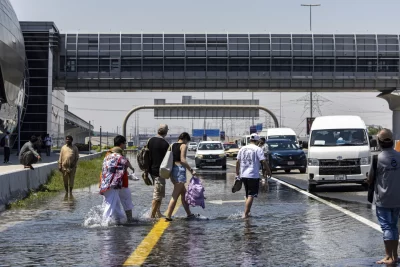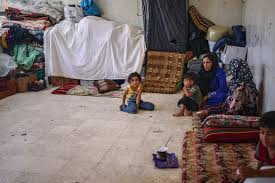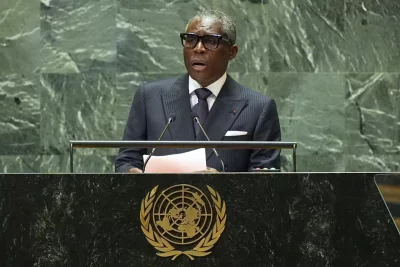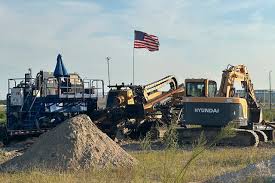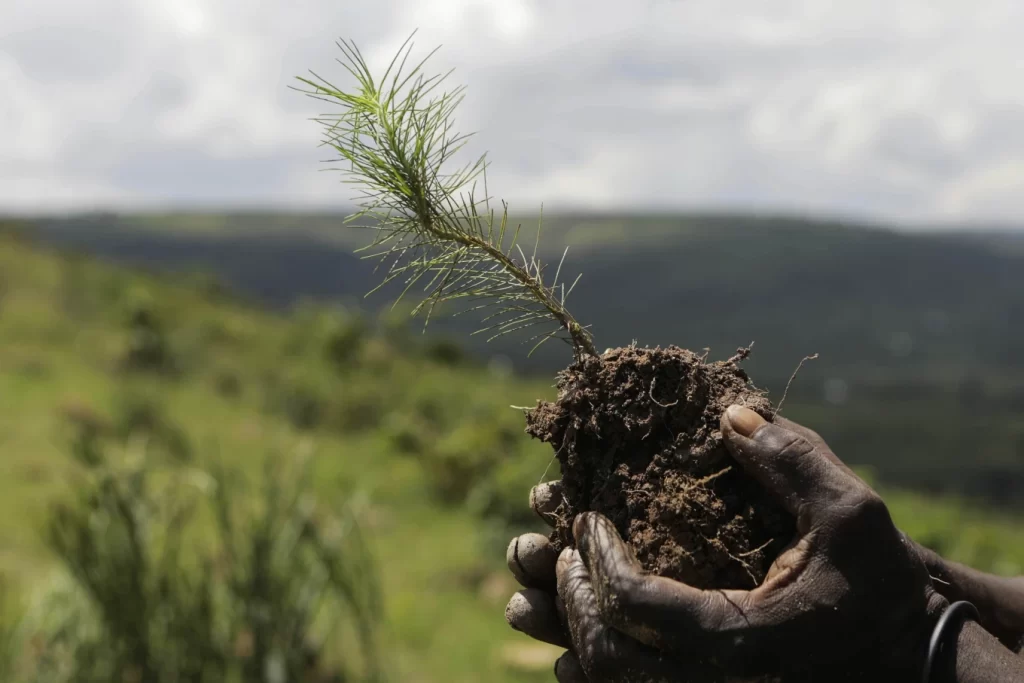
NAKIVALE, Uganda — Enock Twagirayesu was seeking sanctuary when he and his family fled violence in Burundi, and they found it in Uganda, the small East African nation that has absorbed thousands of refugees from unsettled neighbors.
Twagirayesu’s family has grown from two children when they arrived more than a decade ago to eight now, a boon for the family but also a marker of the immense pressure the Nakivale Refugee Settlement has put on the landscape near the Tanzania border.
What was wide forest cover two decades ago is now mostly gone, cut down for cooking fuel. When Twagirayesu saw women digging up roots to burn a few years ago, he knew it was time to act.
He and two other refugees began planting trees in 2016, and Twagirayesu, who had sewn for a living back home, turned out to have a gift for mobilizing people. That early group quickly grew, and he now leads the Nakivale Green Environment Association to carry out what Twagirayesu calls the urgent business of reforesting.
“A tree is not like beans or maize, which you plant and tomorrow you will get something to eat. Planting trees is challenging,” he said.
Deforestation is a national issue in Uganda, where most people use firewood for cooking, trees are often cut to make charcoal for export and some forests fall to illegal logging. The country has lost 13% of its tree cover since 2000, according to Global Forest Watch.
Nakivale, sparsely populated by locals, is one of the few territories in Uganda that could accommodate many refugees. More than 180,000 live there now, with regular new arrivals.
They come from neighboring countries such as Congo, where sporadic violence means an influx of arrivals heading toward Nakivale. There are Rwandan refugees still living in Nakivale who first arrived there shortly after the 1994 genocide. After the refugees are registered, they are allocated small plots of land upon which they can build homes and plant gardens.
On one recent afternoon, a group of refugees were busy planting thousands of pine seedlings on the rocky, steep side of a hill facing the Kabahinda Primary School. In scorching heat, they attacked solid ground with pickaxes and hoes before carefully tucking the seedlings into the earth. Nearly all of the workers have children enrolled at the government-owned but donor-supported school.
Deputy Headteacher Racheal Kekirunga said heavy rains in the valley bring the school to a standstill as stormwater races down the hill and runs through the yard, forcing teachers and students to stay inside.
“We hope that when we plant these trees it will help us to reduce on the running water that could affect our school, and our school gardens,” Kekirunga said. “Especially our learning and teaching. When the rain is too heavy, you must wait until it reduces and then you go to class.”

